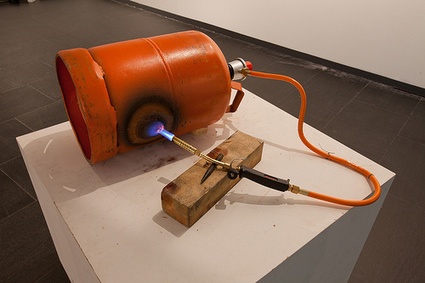 Ariel Schlesinger, Untitled (Gas Loop), 2011
Ariel Schlesinger, Untitled (Gas Loop), 2011
A quote from John Cage, ‘art is sort of an experimental station in which one tries out living’, gave its title to the exhibition that opened a few days ago at Laboral Art and Industrial Creation Centre in Gijón, Spain. Estación experimental [Experimental Station] (see the first part of my report over here) presents the work of artists who see in scientific research a path for artistic methodology and inspiration. Whether the relationship they have developed with science is akin to formal research, pataphysics, science-fiction or investigates paranormal events, these artists play with our expectations and question our current knowledge without necessarily looking for a definite answer. The works selected are often low-tech, they are made using plastic flowers, old school turntables, magnets, music boxes or butane gas cylinder. The way they function is sometimes even laid before the visitor’s eyes. No mystery, no magic trick but poetry, irony and inquisitiveness.
The exhibition is divided into 4 sections that sometimes intertwine and overlap. I’ve already explored the chapter about artists in the laboratory. Here’s my notes on the artists who leave the lab to explore nature and on those who are looking for alternative uses of existing technology.
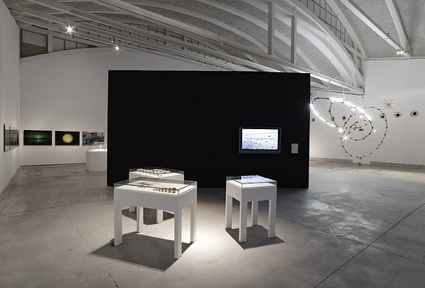 View of the exhibition space. Photo Marcos Morilla
View of the exhibition space. Photo Marcos Morilla
The Fieldwork section, dedicated to artists who get out of the labs to collect data or formulate theories that combine art, science and nature, contained two of my favourite works.
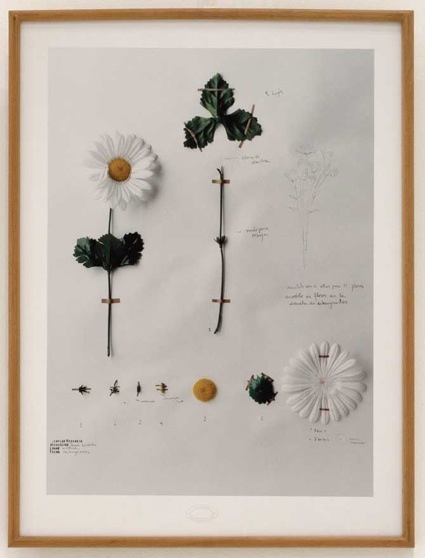 Alberto Baraya, Herbario de plantas artificiales, 2002-2011
Alberto Baraya, Herbario de plantas artificiales, 2002-2011
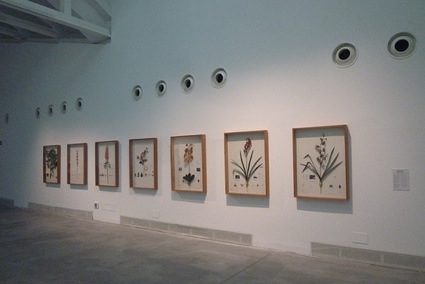
The first is Herbarium of Artificial Plants for which Alberto Baraya took the role of a botanical explorer and collected, catalogued and displayed artificial plants from some of the earth’s most fertile places, starting with Colombia, his own native country and one of the world’s most biodiverse countries. Made out of plastic or fabric, the samples are dissected and exhibited inside botanical slides that rigorously detail the false plant parts and their characteristics.
Baraya’s concern is representation, not ecological critique. “A lot of people need a relationship with nature, the good feeling of nature, but they sometimes get it through artificial plants. We need the representation of nature more than the reality” (via.)
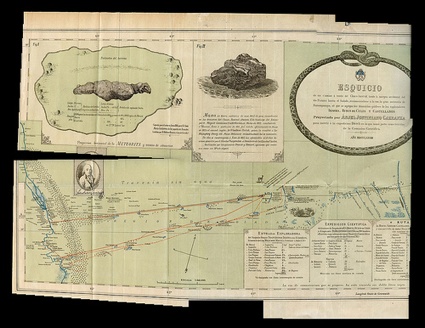 Faivovich & Goldberg, En búsqueda del Mesón del Fierro, 2011
Faivovich & Goldberg, En búsqueda del Mesón del Fierro, 2011
4,000 years ago, a shower of meteorites crashed into Campo del Cielo, Argentina, a rare event that turned the area into natural research laboratory. Since 2006, Guillermo Faivovich and Nicolás Goldberg have been investigated the cultural impact of the Campo del Cielo meteorites.
One of the meteorites, named El Taco, weighed 1998 kg. It is older than Earth itself, and comes from the Asteroid Belt located between Mars and Jupiter. Discovered in 1962 by a farmer, the meteorite was shipped to the Max Planck Institute in Germany and divided in two halves through a cutting procedure that took more than a year. Since then, one part has been located at Washington’s Smithsonian Institution, the other one in Buenos Aires’s Planetarium. In 2010, a Faivovich & Goldberg exhibition held at Portikus, Frankfurt, reunited the two main masses of El Taco, after almost forty-five years of being apart.
The artists have now embarked on a research for a second specimen that seems to have mysteriously vanished into thin air. The Mesón de Fierro was a meteorite venerated by the area’s original inhabitants since it crashed there thousands of years ago. It was last recorded in 1783 by lieutenant commander Miguel Rubín de Celis, who led one of the first scientific expeditions in South America. Despite its weight of 15 to 20 tonnes, the Meson del Fierro is now lost, no one has the slightest idea on its whereabouts.
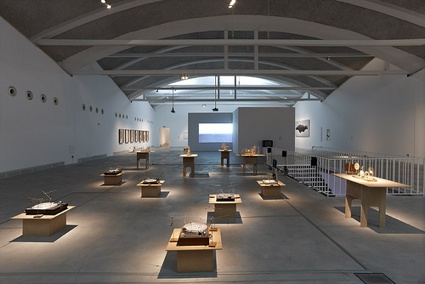 O Grivo (Marcos Moreira and Nelson Soares), Turntables, 2011. Photo by Marcos Morilla
O Grivo (Marcos Moreira and Nelson Soares), Turntables, 2011. Photo by Marcos Morilla
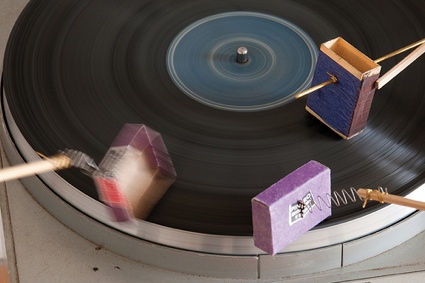 O Grivo (Marcos Moreira and Nelson Soares), Turntables, 2011
O Grivo (Marcos Moreira and Nelson Soares), Turntables, 2011
The artists in the Artefacts and Mechanisms section are mostly interested in subverting existing technology. Interestingly, most of them were sound artefacts and their cohabitation in the same space leads to a surprisingly pleasing ‘soundscape.’ O Grivo‘s turntables proved to be the perfect companions for the tired and delicate sound of Alberto Tadiello‘s Eprom. I’ll never get tired of seeing this installation (or any other of Tadiello’s work), strangely enough, i have the feeling i might have blogged this one a thousand times but can’t find the post anywhere.
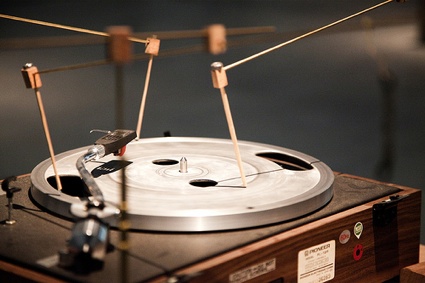 O Grivo, Turntable, 2011
O Grivo, Turntable, 2011
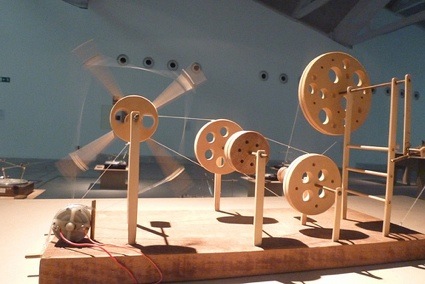
O Grivo build musical instruments using waste or cheap materials. From old turntables to bits of cables or wood. Activated by mechanical and electrical systems, the instruments might look like accidental contraptions but pay closer attention and you will realize that their sound is as delightful as their visual appearance.
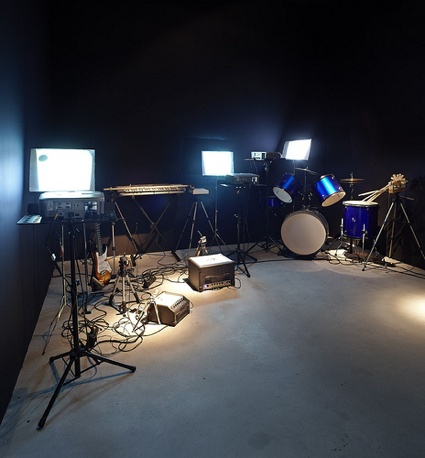 Julio Adán, Ecografía (no tocar, por favor), 2011. Photo by Marcos Morilla
Julio Adán, Ecografía (no tocar, por favor), 2011. Photo by Marcos Morilla
Julio Adán‘s Ecografía (no tocar, por favor) had a whole room to itself. Adán uses musical instruments for drawing using magnetic dust. The result is unpredictable and often fairly loud. The motors and sensors are activated by the presence of visitors.
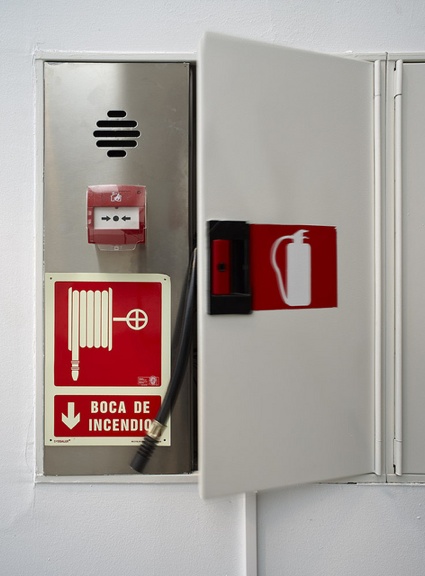
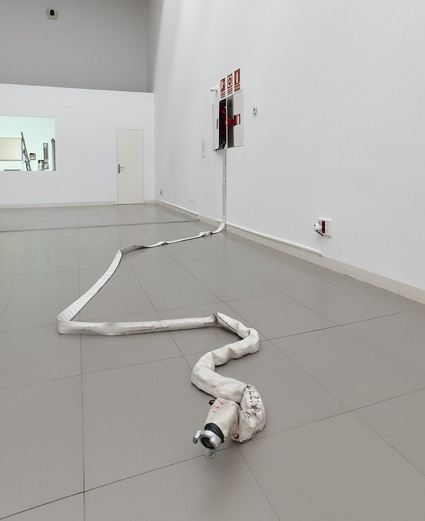 Guillem Bayo, Serie Misfits, 2011 Robot and hose. Photo by Marcos Morilla
Guillem Bayo, Serie Misfits, 2011 Robot and hose. Photo by Marcos Morilla
Guillem Bayo gives life to banal objects in his Misfits Series. The emergency fire hose got out of its box and snakes around the room but the fire extinguisher hasn’t quite found a way to escape and repeatedly knocks on the door to be able to exit.
The idea is simple and perhaps not particularly original but its realization was charming and the artist somehow managed to give a ‘soul’ and a real intent to the rebellious objects.
Estación experimental [Experimental Station] remains open through April 9, 2012 at Laboral Centre of Art and Industrial Creation in Gijón, Spain.
Previously: Experimental Station – Part 1, In the Laboratory, Experimental Station – Caleb Charland.
